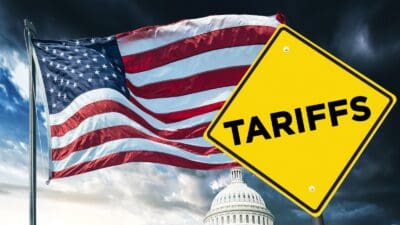Astonishingly, the four cheapest stocks in the FTSE 100 are Standard Chartered (LSE: STAN), HSBC (LSE: HSBA) (NYSE: HSBC.US), Barclays (LSE: BARC) and Lloyds Banking (LSE: LLOY), all with prospective price-to-earnings ratios below 10 times.
Why are banks so cheap? And with these four banks languishing in the bargain basket, are they truly bargains or are they really duds?
Toxic
Two years ago bank stocks were toxic. The Association of British Insurers described them as ‘uninvestible’. Banks faced increasing risks and shrinking returns, and even the Bank of England was distrustful of their figures. Since that time there has been some bad news — especially, the stream of reputational and legal hits has seemed never-ending — but there has mostly been good news. The US and UK economies have strengthened, QE has poured money into the financial system, specific risky country exposure (such as to Greece) has diminished, higher-leveraged banks have raised capital and several banks have reported successful progress with restructuring.
So the glass-half-full explanation is that bank stocks are on a trajectory of reverting to the mean, and the early-bird investor has good reason to feel bullish. On the other hand, banks shares are cheaper than other sectors because the market still perceives downside risk and upside prospects to be poorer than the norm. Intense regulatory pressure, increasing competition from new entrants such as challenger banks and peer-to-peer lenders, and bankers’ collective status as public enemy number one all dog the sector.
Against that backdrop, how attractive do the top four bargains look?
One bargepole, one buy
Standard Chartered deserves its unenviable status as the poorest-rated stock in the FTSE. Strategic errors have compounded bad luck, with three profit warnings in 2014. Big bets on a relatively small number of commodity-related borrowers make a dangerous balance sheet. Management infighting has finally led to the departure of once-respected Peter Sands as CEO, to be replaced by star signing Bill Winters. But whether through bad debts or new management clearing the decks, I reckon StanChart’s shares are likely to fall further before they recover.
HSBC is the bank in vogue to be publically castigated. In truth, the excesses in its Swiss private banking business owe more to the unwise acquisition of Republic National Bank in 1999 than it does to HSBC’s intrinsic culture. With a broadly similar footprint to StanChart’s, HSBC has a more conservative balance sheet and spread of risk. It recently lowered financial targets in recognition of the huge regulatory costs of being a licenced bank. Bigger than many governments, HSBC is resilient and some of the weakness in the share price reflects it being out of favour. It’s the only bank I now hold.
One sell, one hold
In contrast, I sold out of Barclays recently. Barclays’ strategy is, in part, being driven by public and political opinion: the management isn’t strong enough to control its investment bank, but nor had it the chutzpah to just up and sell. Consequently, the value of the franchise is being destroyed by death of a thousand cuts, whilst attention is diverted away from maximising the value of other businesses. Barclays is a good bank in need of better leadership.
Lloyds’ CEO has been amply rewarded for the turnaround in what is now a pure-play UK commercial bank business. He’s been helped by a vibrant UK economy and housing market, and longer term I fear Lloyds’ reduced market footprint limits its growth prospects, but meanwhile management and investors are making hay in the sunshine.
Analysts are pencilling in a yield of 3.8% to mark Lloyds’ resumption of a normal payout, around the same as Barclays’ 3.4%. HSBC offers a massive 6.1% whilst StanChart’s 5.8% is nearly as good if you think it can be sustained.







